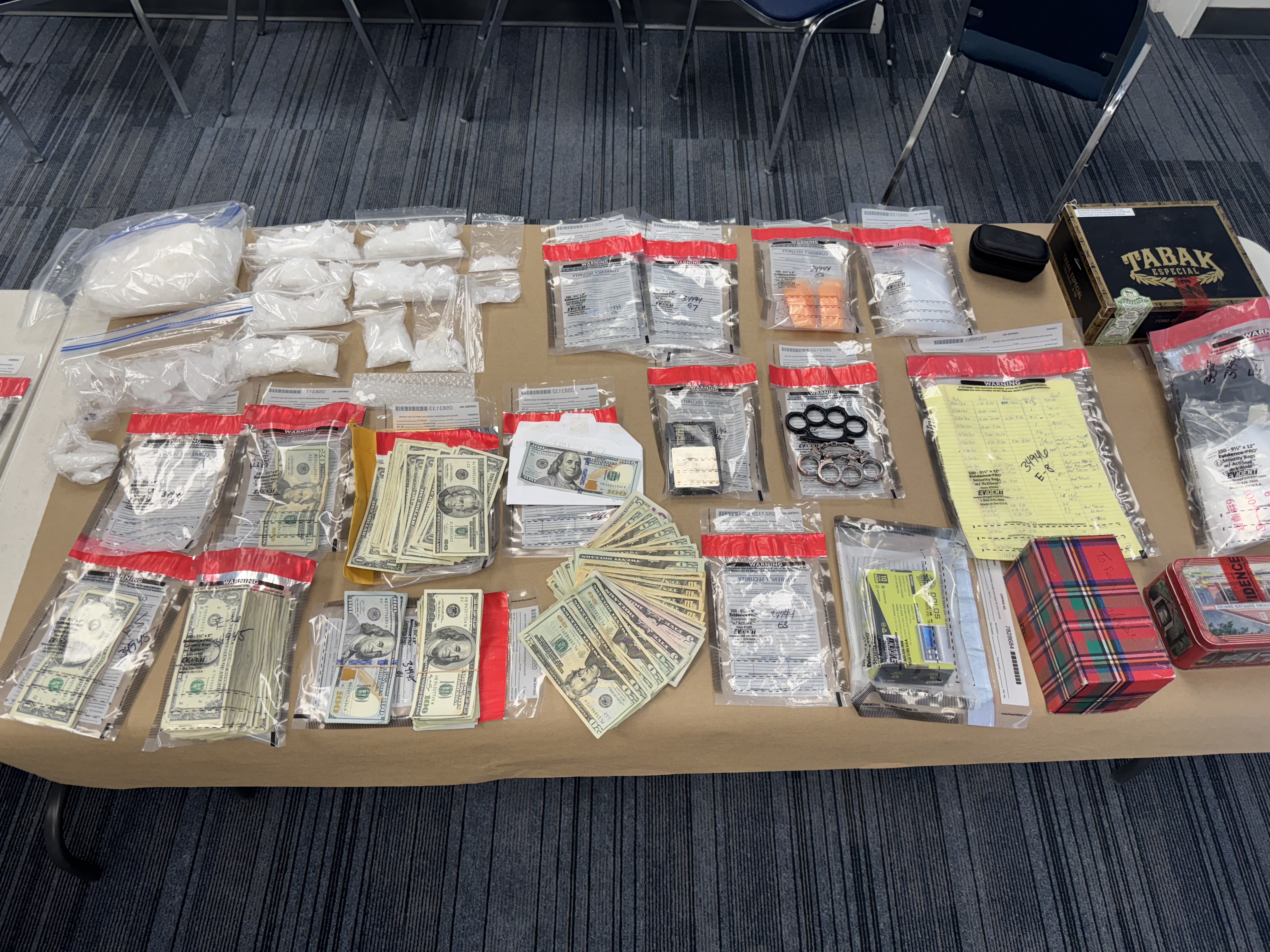Baker’s mineral-rich history isn’t all glittery gold
Published 12:45 pm Friday, September 8, 2017
Gold helped to build Baker County, but it’s a much more common, and utterly unglamorous, constituent of the Earth’s crust that has produced the majority of the county’s mineral wealth over the past half century or so.
Limestone.
This sedimentary rock, composed mainly of calcium carbonate, has little in common with gold or other precious metals.
Limestone lacks the rarity, and thus the value, of gold. It’s not particularly attractive, and is ill-suited to the purposes for which gold is so desirable. If you tried to pound a chunk of limestone into a piece of jewelry you would likely end up not with a ring or a bracelet but with a pile of crushed limestone.
And crushed limestone, so far as I know, is rarely employed as a fashion accessory.
I had some scant knowledge of limestone. I once sat on a piece of limestone which slashed a gash in the rain pants I was wearing. This of course was more my fault than the limestone’s. But it was a memorable occasion just the same. Also it rained not long after.
It was while working on a story earlier this year about two limestone quarries in the Elkhorn Mountains that I stumbled upon — in the digital rather than the literal sense — a much more thorough accounting of limestone in Oregon. And by thorough I mean a document that included many words — “bioclastic,” for instance — that I could barely pronounce much less define.
But though the terminology was in places unfamiliar, the author was not. Howard C. Brooks, who died Nov. 6, 2016, was a longtime Baker City resident and a renowned geologist. Brooks worked at the Baker City office of the Oregon Department of Geology and Mineral Industries from 1956 to 1991.
During his career he wrote many papers, among them the 1989 publication that I came across, “Limestone Deposits in Oregon.” I greatly enjoyed reading it. Brooks crammed a lot of information into 62 pages, but since the report is intended for a general audience rather than a solely scientific one, the text, notwithstanding the occasional insertion of “bioclastic” or another multisyllabic cousin, was straightforward enough.
And a fascinating tale it is.
Much of the limestone in Oregon — and all of it in our corner of the state — was formed at the bottom of a tropical sea, thousands of miles to the southwest, something like 250 million years ago.
That is a considerable span. Long enough, in fact, to allow the exceedingly slow process of plate tectonics to move those limestone deposits clear across the Pacific Ocean to crash into the west coast of North America.
(And a very low-speed crash it must have been.)
For various reasons I needn’t go into here (this of course is a euphemism for “reasons I don’t begin to understand”), limestone, unlike gold and other precious metals, doesn’t hide in tiny veins deep within the Earth, the veritable needle in a haystack.
(If haystacks were as big as the Elkhorns, and made not of hay but of rock.)
Limestone in places forms entire mountains, or least significant parts of mountains. This abundance largely explains why mining the stuff has been a profitable business around here for almost a century. A single piece of limestone that, if it were gold, might pay for a new car, is all but worthless. But find a mass of limestone a couple thousand feet thick and a few miles across, and the numbers start to pencil out as it is with certain other commodities. Chickens, for instance.
This is possible because limestone can be crushed, milled and heated to produce a variety of useful, and thus saleable, products.
Same thing, again, with chickens, although “crushed” and “milled” are perhaps not the most apt verbs.
The most common limestone product — and the one being produced today in Baker County — is portland cement, a vital ingredient in high-quality concrete. Ash Grove Cement Co.’s plant at Durkee, about 25 miles southeast of Baker City, opened in 1979. The factory, which quarries limestone less than a mile south of Interstate 84 (the huge cliff, with its stair-like levels, is quite conspicuous), also produces rock used to refine sugar.
Other deposits, including those tapped by the two quarries in the Elkhorns that prompted my research, yield lime that is used for a variety of industrial purposes, including papermaking, water purification and as an agricultural fertilizer.
Although the limestone- and gold-mining eras overlapped in Baker County, it was a relatively brief period.
The county’s first portland cement plant, at the aptly named town of Lime, along the Burnt River near Huntington, opened in 1923 (the plant closed in 1980, replaced by the current factory several miles to the west at Durkee, although the Durkee quarry opened in 1953).
Although gold mining has never completely ceased in the county, the 1941 closure of the mines at Cornucopia, north of Halfway, marks the end of the industry’s heyday around here.
But quarrying limestone has remained a major industry since World War II. Of the two quarries in the Elkhorns, the site on Marble Creek operated from 1957 to 1963, and the one on Baboon Creek from 1963 to 1971. Limestone from those quarries was processed at a plant near Wingville Road, about five miles north of Baker City. Total production amounted to $7.35 million, according to Brooks’ paper.
Ash Grove Cement’s Durkee quarry taps a limestone formation known as the Nelson Marble (marble being the metamorphic, or crystallized, form of limestone). Brooks writes that the Nelson deposit “has been for many years and will likely continue to be the chief source of limestone in the state.”
I hunt for elk every November in the eastern part of the county, and one of my favorite vantage points, near the heads of Hibbard and Fox creeks, is an outcropping of limestone we call the “fin.”
Brooks describes the reserves of potentially usable limestone in this area as “enormous,” and although I see with the eyes of a layperson rather than a geologist, I certainly would not quibble with his choice of adjectives. In upper Fox Creek the limestone, which is easily discerned by its white-gray color, extends from the tops of peaks more than 6,200 feet high, to the bed of the creek more than 2,000 feet below. Brooks writes that the limestone might be as thick as a mile in the area. This part of the deposit hasn’t been mined because it’s much less accessible than the quarry near the freeway.
Whether gold mining ever again plays a prominent role in Baker County’s economy is beyond my ability to predict.
But it seems to me that the county’s ample supplies of limestone will continue to be a valuable commodity, as long we keep building things from concrete.
And judging from the condition of many of the nation’s highways and bridges, we need to.
Jayson Jacoby is editor of the Baker City Herald.





